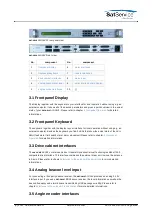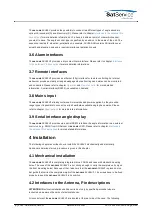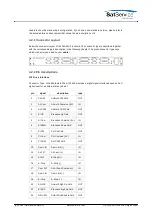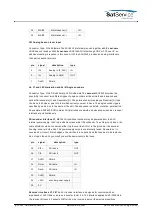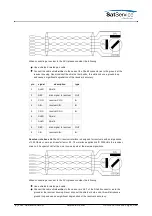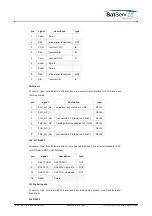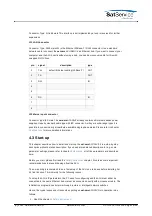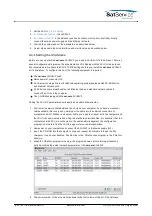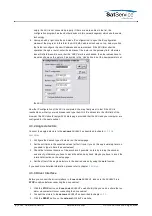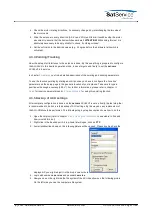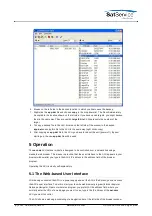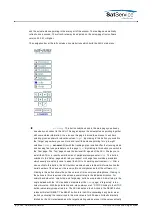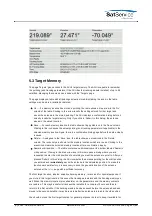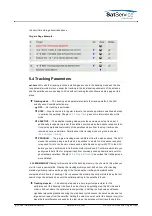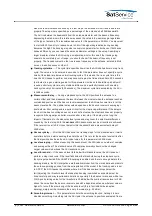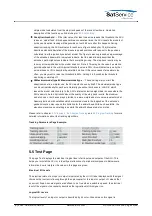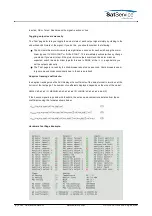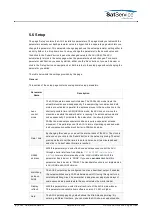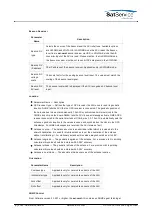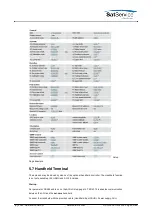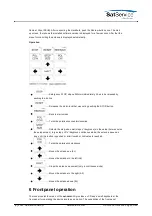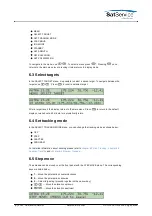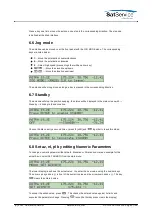
The page 'Targets' gives access to the ACU's target memory. The ACU is capable to remember
the pointing (and tracking parameters, if the ACU has the tracking module installed) of up to 99
satellites. Managing these memories is done with the 'Targets' page.
The page displays a table with all pointings actually stored. By clicking the icons in the table,
settings may be stored, recalled or deleted:
Go --- If a memory location has stored a pointing, the table shows a blue arrow in the 'Go'
column of the table. Clicking to this arrow recalls the settings stored for that target and
moves the antenna to the stored pointing. The ACU displays a confirmation dialog before it
actually recalls the target memory. Only if you click to 'Submit' in this dialog, the antenna
moves to the stored location.
Save --- For each memory location the table shows a floppy disk icon in the 'Save' column.
Clicking to this icon saves the actual pointing (and tracking parameters if applicable) to the
selected memory location. Again, there is a confirmation dialog page before the data actually
is saved.
Delete --- Analogous to the 'Save' icon, the table shows an eraser icon in the 'Delete'
column. The icons only are shown for the memory locations which are in use. Clicking to the
eraser icon clears the selected memory location after a confirmation inquiry.
Numeric orbit position --- The table contains an additional row at the bottom labeled 'Numeric
orbit position'. Clicking to the blue arrow icon in this row opens a dialog where you are
requested to enter the orbit position of a satellite you want the antenna to point to. After you
pressed 'Submit' in this dialog, the ACU computes the antenna pointing for the orbit position
you entered and immediately moves the antenna to the calculated position. To make this
function work satisfactory, it is necessary to have the geodetic location of the antenna
entered at the
Setup
page with a sufficient accuracy.
The first target location, labeled 'adaptive tracking memory', is reserved for special purposes: If
you store to this target location, this saves the tracking parameters and the tracking memory as
well. When this memory location is recalled later on, the parameters and the memory contents
are restored. This may be useful to track another satellite for a couple of hours and then to
return to the first satellite. If the tracking memory has been saved before the antenna has been
moved to the second satellite, it may be restored after the antenna returned to the old position.
You should not use the first target location for general purposes in order to keep it available for
(C) 2022, SatService GmbH
www.satnms.com
ACU-19V2-UM-2209 Page 22/65

